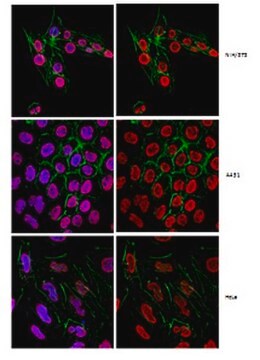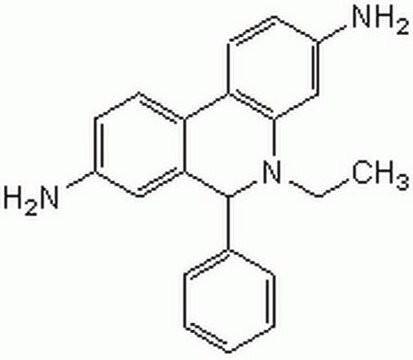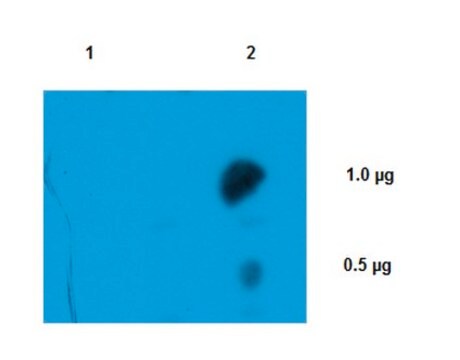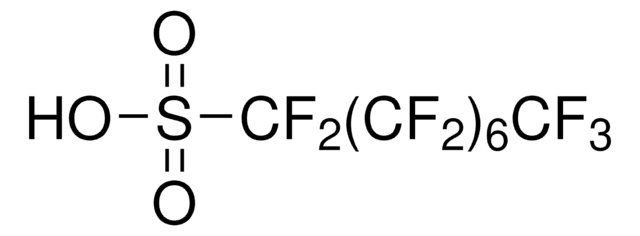NA02A
Anti-2,2,7-Trimethylguanosine Mouse mAb (K121) Agarose Conjugate
suspension (Liquid), clone K121, Calbiochem®
About This Item
Prodotti consigliati
Origine biologica
mouse
Livello qualitativo
Forma dell’anticorpo
purified antibody
Tipo di anticorpo
primary antibodies
Clone
K121, monoclonal
Forma fisica
suspension (Liquid)
contiene
≤0.1% sodium azide as preservative
Reattività contro le specie
human, mouse, rat
Produttore/marchio commerciale
Calbiochem®
Condizioni di stoccaggio
do not freeze
Isotipo
IgG1
Condizioni di spedizione
wet ice
Temperatura di conservazione
2-8°C
modifica post-traduzionali bersaglio
unmodified
Descrizione generale
Immunogeno
Applicazioni
Immunoprecipitation (15 µl beads/sample)
Immunoprecipitation (1-2 µg/ml; see application references)
Immunocytochemistry (use Cat. No. NA02)
Paraffin Sections (use Cat. No. NA02)
Attenzione
Stato fisico
Risultati analitici
Transfer RNA (tRNA)
Heterogenous nuclear RNA (hnRNA)
Altre note
Krainer, A.R. 1988. Nuc. Acids Res.16, 9415.
Luhrmann, R. 1988. Birntiel, M.L. (ed) Springer-Verlag, Berlin and Heidelberg. 71.
Reddy, R. and Busch, H., 1988. Birnstiel, M.L. (ed) Springer-Verlag, Berlin and Heidelberg. 1.
Krainer, A.R. and Maniatis, T. 1985. Cell42, 725.
Kramer, A., et al. 1984. Cell38, 299.
Lerner, M.R., et al. 1980. Nature283, 220.
Note legali
Non trovi il prodotto giusto?
Prova il nostro Motore di ricerca dei prodotti.
Codice della classe di stoccaggio
11 - Combustible Solids
Classe di pericolosità dell'acqua (WGK)
WGK 1
Punto d’infiammabilità (°F)
Not applicable
Punto d’infiammabilità (°C)
Not applicable
Certificati d'analisi (COA)
Cerca il Certificati d'analisi (COA) digitando il numero di lotto/batch corrispondente. I numeri di lotto o di batch sono stampati sull'etichetta dei prodotti dopo la parola ‘Lotto’ o ‘Batch’.
Possiedi già questo prodotto?
I documenti relativi ai prodotti acquistati recentemente sono disponibili nell’Archivio dei documenti.
Il team dei nostri ricercatori vanta grande esperienza in tutte le aree della ricerca quali Life Science, scienza dei materiali, sintesi chimica, cromatografia, discipline analitiche, ecc..
Contatta l'Assistenza Tecnica.








